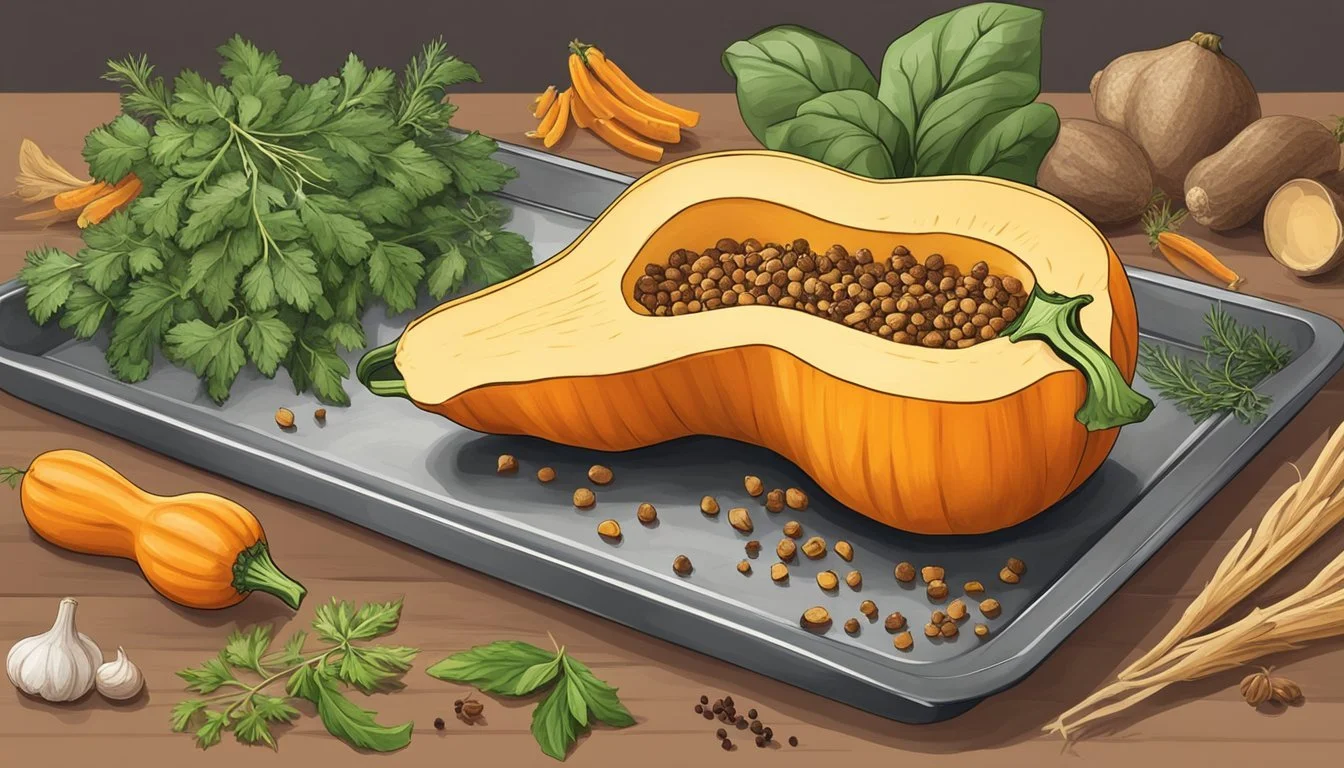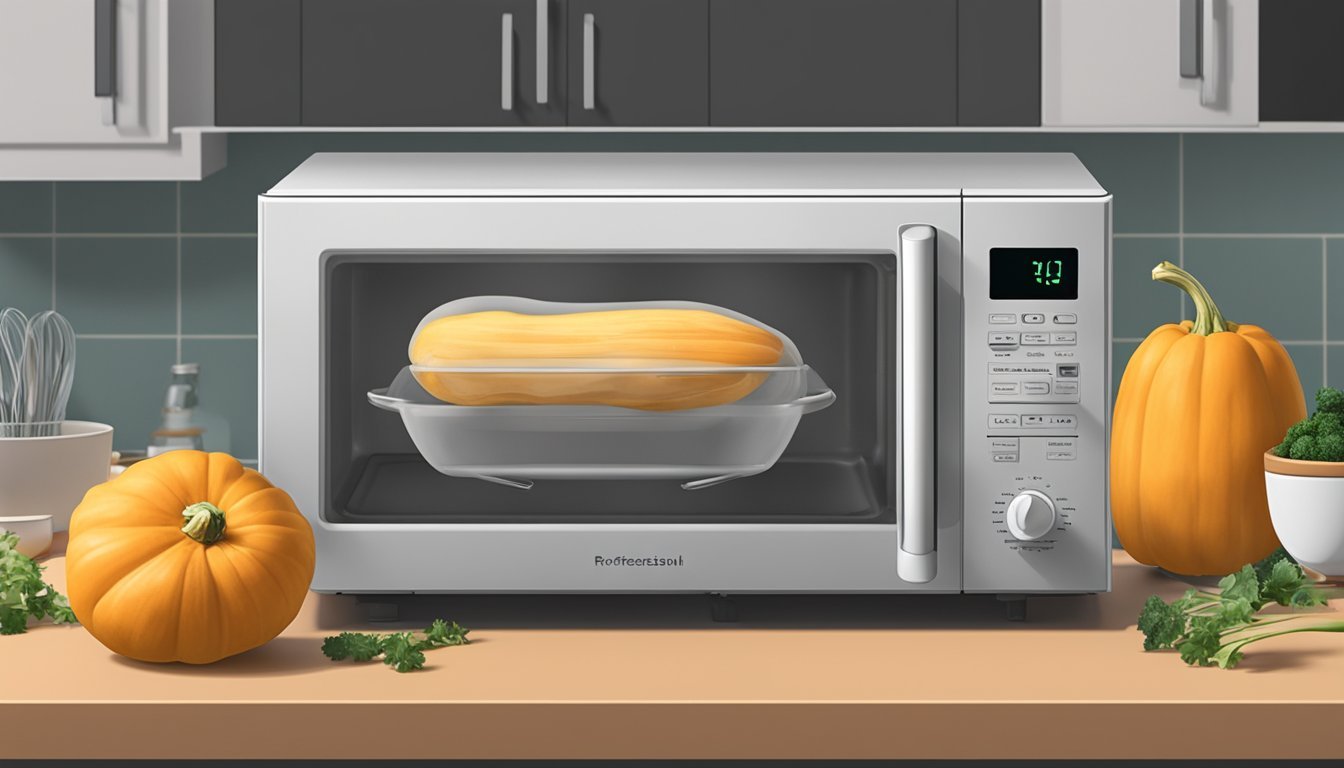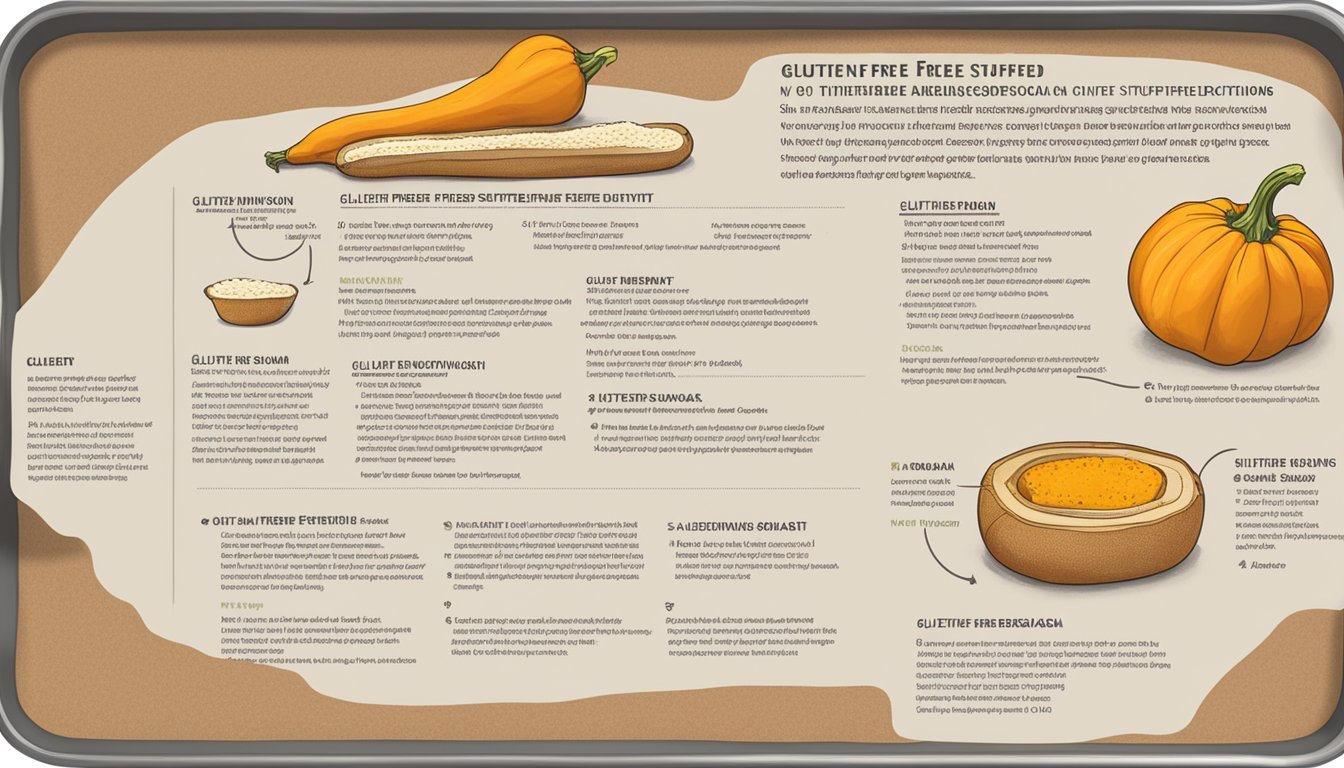How to Reheat Gluten-Free Stuffed Butternut Squash
Best Methods for Perfect Texture
Reheating gluten-free stuffed butternut squash can be quick and straightforward, ensuring it retains its delicious flavors and satisfying texture. To reheat, place the stuffed squash in a preheated oven at 350°F (175°C) for about 15-20 minutes or until heated through. This method helps maintain the integrity of both the squash and the gluten-free stuffing, ensuring a consistent taste and texture.
Using the right techniques and ingredients can make a considerable difference. Selecting fresh, firm butternut squash without blemishes is essential for a flavorful outcome. Opt for high-quality gluten-free ingredients like quinoa, cranberries, and kale to ensure each bite is both nutritious and delightful.
For those who meal prep or enjoy leftovers, reheating without compromising quality is crucial. A well-reheated gluten-free stuffed butternut squash can offer the same comfort and nourishment as it did when freshly prepared, making it a convenient and tasty option for any mealtime.
Understanding Gluten-Free Stuffed Butternut Squash
Gluten-free stuffed butternut squash provides a nutritious and delicious option for those avoiding gluten. This dish is rich in vitamins and minerals, making it an excellent addition to any menu.
The Benefits of Butternut Squash
Butternut squash is a nutrient-dense vegetable packed with essential vitamins and minerals. It is an excellent source of vitamin A, which supports vision and immune function.
Vitamin C in butternut squash aids in collagen production and helps the body absorb iron. Additionally, it contains fiber, promoting digestive health and satiety.
Butternut squash also includes important minerals like potassium and magnesium, which are vital for heart health and muscle function.
Moreover, the seeds of the butternut squash are edible and can be roasted to add extra crunch and nutrition to the dish.
What Makes a Dish Gluten-Free
A dish is considered gluten-free when it contains no ingredients derived from gluten-containing grains such as wheat, barley, and rye. Ensuring a dish is gluten-free involves careful selection of ingredients and avoiding cross-contamination.
Gluten-free grains like quinoa and rice are often used as stuffing ingredients.
Reading labels is crucial since gluten can be present in seasonings and sauces. It's essential for individuals with gluten sensitivities or celiac disease to eat only certified gluten-free foods.
When preparing a dish at home, using separate utensils and cooking spaces can help maintain a gluten-free environment.
These practices ensure that the stuffed butternut squash remains a safe and enjoyable dish for those requiring a gluten-free diet.
Ingredients and Substitutions
Selecting the right ingredients and considering creative alternatives are essential for a perfect reheat of gluten-free stuffed butternut squash. This ensures a delicious and suitable dish for various dietary preferences.
Choosing Fresh Ingredients
For the best flavor and texture, start with ripe butternut squash. Cut it in half lengthwise and remove seeds using a spoon. Olive oil, salt, and pepper help enhance the squash's natural sweetness during roasting.
Fillings include spinach or kale, which add a hearty green note. Feta cheese and Parmesan provide a savory punch. Garlic and cherry tomatoes add nuanced flavors, while pecans contribute a satisfying crunch. Incorporating these fresh ingredients ensures a wholesome and balanced dish.
Creative Alternatives for Common Allergens
For those with dairy allergies, substitute cheese with vegan cheese options or nutritional yeast for a cheesy flavor without dairy. Replace spinach or kale with other leafy greens like Swiss chard if preferred.
Substituting pecans can be done with other nuts such as walnuts or even sunflower seeds to accommodate nut allergies. Use coconut oil instead of olive oil for a subtle twist. These substitutions ensure that the dish remains delicious and safe for various dietary needs.
Considering fresh herbs like basil or thyme can also introduce unique flavors to your stuffed butternut squash. Feel free to get creative with ingredients while celebrating their natural essence.
Preparation Before Reheating
For the best results when reheating gluten-free stuffed butternut squash, it's crucial to properly store it initially and balance its temperature before reheating.
Proper Storage Techniques
To maintain quality, leftovers should be stored in an airtight container. After cooking, allow the stuffed butternut squash to cool down to room temperature within two hours. Promptly refrigerate the cooled squash to avoid bacterial growth.
When refrigerated, the stuffed squash maintains its best quality for 3 to 4 days. If you plan to store it for longer, consider freezing. Wrap the squash tightly in plastic wrap, then place it in a freezer-safe bag or container. When kept frozen, it remains good for 2 to 3 months.
Label the container with the storage date. This ensures you know how long it has been stored and can avoid using it past its optimal period.
Pre-Reheat Temperature Balancing
Balanced temperature is important before reheating. If the stuffed butternut squash has been refrigerated, remove it and let it sit at room temperature for 15 to 20 minutes. This reduces drastic temperature changes which can affect texture and taste.
For frozen squash, transfer it from the freezer to the refrigerator the night before you plan to reheat it. Allow it to thaw overnight. If thawing in a microwave, use the defrost setting carefully to prevent cooking parts of the squash.
Avoid reheating directly from a frozen state in the oven or microwave without thawing as it can lead to uneven heating and poor texture.
Reheating Techniques and Tips
Reheating gluten-free stuffed butternut squash can be done effectively using several methods. It's important to retain the flavors and texture while ensuring the squash is heated through evenly.
Oven Reheating Methods
Preheating the oven to 350°F (175°C) is essential. Place the previously prepared butternut squash on a baking sheet lined with parchment paper to prevent sticking and facilitate easy cleanup. Covering the squash with aluminum foil will help retain moisture and prevent it from drying out.
When reheating leftovers, the squash should be heated for approximately 20-25 minutes. Check that it is warmed through by inserting a fork into the center. If still cool, heat in 5-minute increments until the desired temperature is achieved.
It's also advisable to store leftover stuffed butternut squash in an airtight container in the refrigerator. Before reheating, allow the squash to reach room temperature for more even warming.
Alternative Reheating Solutions
Using a stovetop method with a skillet is an efficient and quick way to reheat. Heat a non-stick pan over medium heat and add a small amount of oil or butter. Carefully place the butternut squash in the pan and cover it with a lid. This method helps retain moisture and warms the squash evenly.
Microwaving is another option, especially for quick servings. Place the squash in a microwave-safe dish and cover it with a microwave-safe lid or damp paper towel. Heat on medium power in 2-minute intervals, rotating the pieces to ensure even heating.
For all methods, reheating tips involve keeping an eye on the process and ensuring the squash is not overheated to preserve its texture and flavor. Use the method that best fits your time constraints and equipment availability.
Serving and Presentation
When serving gluten-free stuffed butternut squash, attention to plating and garnishes can elevate the dish, making it a standout comfort food on any holiday menu. Additionally, well-chosen pairing suggestions ensure a balanced course, complementing the flavors of the squash.
Plating and Garnishes
Presenting stuffed butternut squash in an elegant manner enhances its appeal. Start by placing each squash half on a large plate. The squash should be positioned neatly, with stuffing visibly centered for visual appeal.
For garnishes, fresh herbs such as parsley, cilantro, or thyme add color and a burst of freshness. Sprinkle chopped herbs generously over the squash and around the plate.
To elevate the dish further, consider drizzling a light balsamic glaze or a scatter of pomegranate seeds. These not only add a pop of color but also layer additional flavors on the plate.
Pairing Suggestions for a Perfect Course
Consider serving gluten-free stuffed butternut squash alongside complementary side dishes for an enriched dining experience. A fresh salad with mixed greens, cranberries, and a citrus vinaigrette balances the warm, hearty flavors of the stuffed squash.
Alternatively, a hearty soup such as a creamy tomato or roasted red pepper can start the meal while pairing well with the squash. For a more lavish holiday side dish, roasted veggies like Brussels sprouts or green beans provide texture and additional flavors.
These pairings ensure a fulfilling, well-rounded course that appeals to a variety of palates and maintains the balance between comfort and elegance.
Health and Nutritional Information
Stuffed butternut squash is a nutritious and satisfying dish, thanks to its wholesome ingredients. Key nutritional aspects include the caloric content of the ingredients and the balance of macronutrients.
Caloric Content of Ingredients
Butternut squash is the primary component in this dish. It typically contains around 82 calories per 1 cup of cooked squash. When stuffed with quinoa, which has about 222 calories per cup, the final meal starts to add up calorie-wise.
Additional ingredients like olive oil, dried cranberries, or kale contribute to the overall calorie count.
Quinoa: ~120-140 calories per serving (1/2 cup) Olive Oil: ~120 calories per tablespoon Kale: ~35 calories per cup
The combination of these colorful ingredients results in a dish that is calorie-dense yet nutritious. Serving sizes can be adjusted to maintain a calorie intake that aligns with dietary goals.
Balance of Macronutrients
Stuffed butternut squash offers a balanced mix of essential macronutrients.
Protein: Quinoa significantly boosts the protein content, providing around 8 grams of protein per cup. This helps in muscle maintenance and repair.
Dietary Fiber: Both butternut squash and quinoa are high in dietary fiber, with about 6.6 grams per cup of squash and 5.2 grams per cup of quinoa. Fiber aids in digestion and helps maintain a feeling of fullness.
Fats: Healthy fats come primarily from added olive oil. One tablespoon of olive oil contains about 14 grams of fat, which supports heart health.
Carbohydrates: This dish also includes a moderate amount of carbohydrates. Quinoa has around 39 grams of carbohydrates per cup, which provides energy. Butternut squash adds another 22 grams of carbs per cup.
Incorporating all these elements, stuffed butternut squash offers a well-rounded nutritional profile suitable for a variety of dietary needs.
Recipe Variations and Ideas
This section provides different ways to customize your stuffed butternut squash recipe, offering ideas for both holiday adaptations and international flavors. These variations can help you tailor the dish to suit specific tastes and seasons.
Seasonal Adaptations for Holidays
Thanksgiving is an ideal time to incorporate warm spices and traditional ingredients into your stuffed butternut squash. Consider adding sage, thyme, and rosemary for a savory touch. Mix in cranberries, chopped pecans, and wild rice to capture the essence of classic holiday dishes.
For Christmas, think about using ingredients like chestnuts, dried apricots, and nutmeg. These ingredients can add a festive and rich flavor profile to your dish. You can also include a plant-based sausage for a heartier, meat-free option.
During the winter holidays, swapping out the stuffing for a butternut squash pasta or soup can also provide a comforting and seasonal twist to your menu.
Alternative Cuisines and Flavors
For those interested in exploring different cuisines, there are many ways to put a global spin on your stuffed butternut squash.
A Mediterranean variation might include quinoa, sundried tomatoes, olives, and feta cheese. This combination introduces bold and tangy flavors, perfect for a lighter, yet satisfying dish.
A Southwest-inspired stuffed butternut squash can incorporate black beans, corn, bell peppers, jalapeños, and a sprinkle of Mexican cheese blend. Top it off with a dollop of sour cream or guacamole for added richness.
For a vegan or plant-based alternative, consider a mix of kale, chickpeas, and tahini dressing. These ingredients offer a nutritious and flavorful option suitable for various dietary preferences.
Optimizing for Make-Ahead and Freezing
Preparing gluten-free stuffed butternut squash for make-ahead meals can be convenient when proper freezing and reheating techniques are applied. Here’s how to ensure quality texture and flavor when freezing and reheating.
Best Practices for Freezing and Thawing
To freeze stuffed butternut squash, allow it to cool completely after cooking. This step prevents condensation, which could lead to ice crystals forming on the food.
Wrap each individual stuffed squash tightly in plastic wrap or aluminum foil. Place the wrapped squash in an airtight container or a heavy-duty freezer bag to avoid freezer burn.
Label the container with the date and contents. When ready to use, thaw the squash overnight in the refrigerator for best results. Avoid thawing at room temperature to minimize bacterial growth.
Maintaining Texture and Flavor Post-Freezing
When reheating, it is crucial to retain the texture and flavor of the butternut squash. Preheat the oven to 350°F (175°C). Place the thawed squash on a baking sheet and cover it with foil to prevent drying out.
Reheat for 20-25 minutes or until the squash is thoroughly warmed. For crisper results, uncover the foil during the last 5 minutes of reheating. Avoid microwaving as it can cause the squash to become mushy.
Consider adding a sprinkle of fresh herbs or a drizzle of olive oil before serving to enhance flavor.







